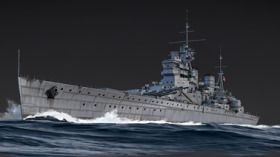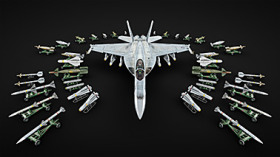
- For PC
- For MAC
- For Linux
- OS: Windows 10 (64 bit)
- Processor: Dual-Core 2.2 GHz
- Memory: 4GB
- Video Card: DirectX 11 level video card: AMD Radeon 77XX / NVIDIA GeForce GTX 660. The minimum supported resolution for the game is 720p.
- Network: Broadband Internet connection
- Hard Drive: 22.1 GB (Minimal client)
- OS: Windows 10/11 (64 bit)
- Processor: Intel Core i5 or Ryzen 5 3600 and better
- Memory: 16 GB and more
- Video Card: DirectX 11 level video card or higher and drivers: Nvidia GeForce 1060 and higher, Radeon RX 570 and higher
- Network: Broadband Internet connection
- Hard Drive: 62.2 GB (Full client)
- OS: Mac OS Big Sur 11.0 or newer
- Processor: Core i5, minimum 2.2GHz (Intel Xeon is not supported)
- Memory: 6 GB
- Video Card: Intel Iris Pro 5200 (Mac), or analog from AMD/Nvidia for Mac. Minimum supported resolution for the game is 720p with Metal support.
- Network: Broadband Internet connection
- Hard Drive: 22.1 GB (Minimal client)
- OS: Mac OS Big Sur 11.0 or newer
- Processor: Core i7 (Intel Xeon is not supported)
- Memory: 8 GB
- Video Card: Radeon Vega II or higher with Metal support.
- Network: Broadband Internet connection
- Hard Drive: 62.2 GB (Full client)
- OS: Most modern 64bit Linux distributions
- Processor: Dual-Core 2.4 GHz
- Memory: 4 GB
- Video Card: NVIDIA 660 with latest proprietary drivers (not older than 6 months) / similar AMD with latest proprietary drivers (not older than 6 months; the minimum supported resolution for the game is 720p) with Vulkan support.
- Network: Broadband Internet connection
- Hard Drive: 22.1 GB (Minimal client)
- OS: Ubuntu 20.04 64bit
- Processor: Intel Core i7
- Memory: 16 GB
- Video Card: NVIDIA 1060 with latest proprietary drivers (not older than 6 months) / similar AMD (Radeon RX 570) with latest proprietary drivers (not older than 6 months) with Vulkan support.
- Network: Broadband Internet connection
- Hard Drive: 62.2 GB (Full client)

Matchmaking (MM) is a very important game mechanic which has to be clearly understandable to any player. Most players no doubt know about the limit on the +/- 1.0 BR variance of vehicles’ Battle Ratings when assembling teams. This means that when you prepare for the next battle, assemble a squad or return to a comfortable battle rank for you, you’re sure to pay attention to the BR of the vehicles in your selection.
But far fewer players know about the existence of another matchmaking rule – rank limitations.
This rule works like this: regardless of the resulting Battle Rating of an individual vehicle or a player’s lineup of vehicles, matchmaking is calculated for opponents whose top vehicle’s rank differs from the player’s highest vehicle’s rank by no more than one (either higher or lower).
Complicated? On paper, sure. In reality, this rule activates very rarely, since even without it, the Battle Ratings of vehicles in most cases fall within the acceptable limitations of ranks. But there are individual examples of vehicles whose Battle Rating does not prevent an encounter between, for example, a vehicle at the lower end of rank three with a vehicle at the top end of rank one. At the same time, in spite of the seemingly large variance and the resulting concern that a vehicle at the top end of rank one won’t be able to take on a vehicle at the bottom end of rank three, in practice it all turns out differently and the vehicles would have comfortably fought with each other – if not for the limitation rule on ranks.
We strive not only to support optimal balance among all vehicles represented in War Thunder, but also to make the balancing mechanic simple and easy to understand for any player.
This means that the next logical step in improving our matchmaking mechanism is additional development of a simple and understandable Battle Rating system by making an exception to the limitation rule on ranks.
We’ll use some examples to explain this. In the majority of battles, no changes will be apparent – matchmaking will, as ever, be determined based on the Battle Rating of vehicles. However, in rare cases, the game will be a little easier for individual vehicles – both for their owners and for players who encounter them in battle.
Let’s take a look at Germany’s aviation tech tree. At the time of writing, the attacker aircraft Hs.129B-3 has a rating of 3.0 in Arcade Battles. According to MM rules, it can fight against vehicles between BR 2.0 and 4.0. Now look at the Battle Rating of the He.112B-0 – it is 2.3 BR. I.e., by matchmaking rules, a meeting between these aircraft is more than possible, and in a duel, the Heinkel fighter would most likely surpass the Henschel bomber – if it weren’t for the rule that previously forbade an encounter between a rank three attacker aircraft and a rank one fighter.
Greater variety of vehicles in battles while maintaining a comfortable balance of power, and in some cases a somewhat faster start to the battle! This will work in all cases – after all, before this rule is rescinded, a very effective vehicle would never encounter an opponent more than one rank higher regardless of how high we take its Battle Rating, this means it would still undeservedly end up among the top selected for battle. Similarly, a less effective vehicle had no chance in encountering other less effective vehicles at lower ranks forcing them instead to meet more powerful machines.




Comments (287)
The thing is, that there is almost little you can do vs vehicles that is +1 BR above you, especially in Ground Battles and Jet Combat. M-36 keeps getting matched with IS-3s and T-54s, and do tell me how to beat them effectively?
There are a couple of ways you can deal with opponents that you can't penetrate easily, my favorite one is aiming for their gun. However, using APCR ammo on the M-36, you should be able to penetrate the turret front of both the T-54 and the IS-3. On the T-54, aim right next to the gun on the gun mantlet. This is the flattest part of the turret armor and is only around 210 mm thick.
Alternatively, you can fire a AP shell at the lower end of the left side of the T-54's turret and have it bounce down into the hull and detonate it's ammo.
I request. Please separate Jets from Props battles. I fed up fighting against jet players that keeps on running and running and running.
I don't mind BR < 7.3 jets in prop matches.
just plz let the fw200 condor get a lower br its a waste of such a pretty plane to be almost unplayable
Please lower the BR of the Tiger H1 and the Panther D. They should actually fight a few lower vehicles like it was back in the day.
Are you saying you want HISTORICAL matchmaking? (e.g KV-2 VS Pz-II)
MooseTheSyrupMan, pz2 was not in poland invasion, maybe as reserve, kv2 was not existent on this time. The German tanks have to fight all the time white the answer on them from other side, near nothing again the vechiles was have the enemy by introdusing them for the enemy. historical machmaking?
I've read the article twice and still don't get how you want to alter the match making system. Do you simply plan to remove the +/- 1 Tier rule?
No, its just that rank 1 can meet rank 3, or rank 2 can meet rank 4 and so on...
Article is not very clear. Yet I understand that the +-1 tier rule is simply removed. Because it was seldom used and this will make the MM rules simpler to understand.
This is a bad decision. It will make it even harder to play with a large amount of vehicles. People will just rage more and play less.
i know this already.... that you cant meet another player more than one rank regardless of br.
The matchmaker flaws are more endurable for a skilled player as the GF AB "cost free" aircraft "events" designed for people who want an unfair gain! I play one or maybe two battles a week, just because I cannot endure this unfair exploit, especially when a "suicide bomber" or attacker destroys my tank paying nothing for this... This is an infamy!
Oh Gaijin, you're at it again.
And The Pz III N ?! It was ok at the beginning, now it's nerfed into oblivion, a good machinegun is more performant!!
No it's not.
Use HEAT? 100mm of penetration if I recall...Very potent, especially in AB...
Submit a complaint